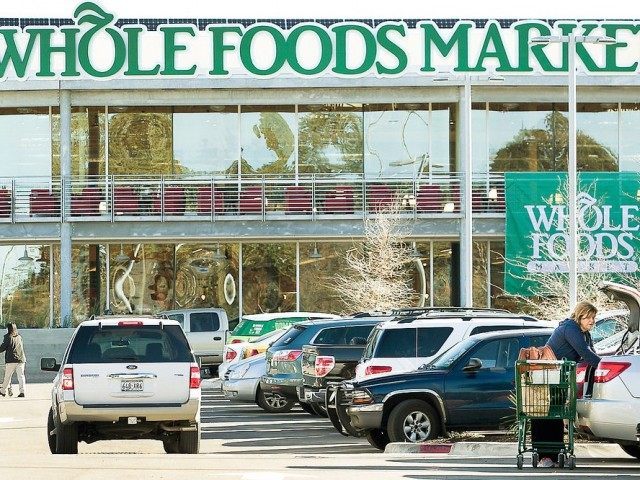Amazon.com’s $13.7 billion acquisition bid for Whole Foods Market represents an existential threat to Silicon Valley: namely, that the $500 billion cash hoard held by U.S. tech giants will be spent on the real economy, instead of funding another cycle of disruptive tech start-ups.
Amazon and Whole Foods Market (WFM) have one thing in common: neither have ever generated much of a cash flow margin on revenue. Both companies’ stock price went up by 10 times from their 2009 lows through late 2013. But as WFM’s stock was cut in half over the next three years as it became more like a grocery store, Amazon’s price tripled as investors’ perception of value morphed from a logistics and distribution firm to high-tech cloud computing, artificial intelligence, healthcare data house and media creator.
Although buying brick and mortar is consistent with the long-term strategy CEO Jeff Bezos outlined in the 2010 book The Everything Store, the Whole Foods bid demonstrates that Amazon sees more disruptive profit opportunities in the “bread and butter” economy, rather than continually funding negative cash flow to launch disruptive high-tech start-ups.
Amazon has crucified brick and mortar retailers by forcing them to battle online, where Amazon dominates in logistics and distribution technology. But WFM has virtually no online presence and is only the 11th largest grocery store chain in the U.S. and U.K., with 460 stores and 18 million square feet of retail space. Whole Foods’ U.S. market share is only 1.7 percent, compared to 17 percent for Walmart and 9 percent for Kroger.
Whole Foods’ growth stalled in 2013 because Kroger, with 2,625 supermarkets and 225 million square feet of retail space, began leveraging its brick-and-mortar economies of scale to offer essentially the same organic products at a 21 percent gross margin that Whole Foods — with a fraction of the economies of scale — offers at a 37 percent gross margin.
Amazon has been experimenting with a grocery delivery business for two years through its Amazonfresh unit, but the business is unprofitable because of its labor intensiveness. The advent of self-driving commercial vehicles over the next decade would allow Amazon to leverage its massive economies of scale disruptively, by converting Whole Foods stores in urban markets to serve as both retail stores and delivery warehouses.
Corporate venture capital investing in start-ups has been the mother’s milk of Silicon Valley and it was expected that a huge portion of the $500 billion in cash on tech giants’ balance sheets would fund a new wave of disruptive new technologies. But that “milk” has been drying up as corporate investors have demanded quicker pathways to profitability.
Initial public offering (IPO) registrations in the U.S. peaked in 2014 at 364, with 55 tech deals. The number fell by a third in 2015 to 234 IPOs, with tech sliced in half to only 23 deals. The number of IPOs plunged again in 2016 to 126, with tech hitting a new low of 21 deals.
The IPO drought feed-back loop began shrinking venture capital fundings last year, which fell by 24 percent, from 17,992 in 2015 to 13,665 in 2016, according to Price Waterhouse. Despite a strong stock market, Breitbart News sources report a continued Silicon Valley venture slowdown in 2017.
Amazon, with a $500 billion market valuation on estimated sales of $160 billion this year, is trading at a valuation of about 3.1 times sales. The bid of $13.7 billion for Whole Foods, which is expected to have $15 billion in sales, means Amazon is bidding just .9 times sales.
The existential risk for Silicon Valley start-ups is that other tech giants will follow Amazon and use their high valuations to buy real economy assets at rock-bottom valuations, and then use their existing technologies to make disruptively big profits.

COMMENTS
Please let us know if you're having issues with commenting.